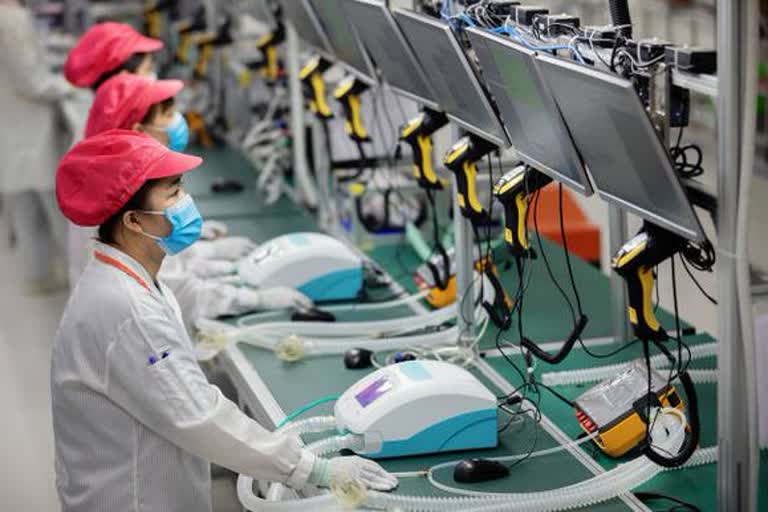Hyderabad: The Galwan valley faceoff between India and China and the subsequent martyrdom of 20 soldiers on the Indian side raised the nationalist spirits at home, and there are growing demands to ban Chinese products and restrict their entry into India.
It is a fact that India is a huge market for Chinese goods and Chinese exports to India constitutes nearly 3 percent of total exports of China. However it is pertinent to remember that China today is an important link in the global supply chain network and in fact India’s manufacturing is largely dependent on import of intermediate goods from China.
A sledge hammer approach on banning imports from China would severely affect India’s manufacturing sector, there by impacting the employment and output of India.
In this backdrop there is a need to put ourselves a fundamental question, “why can’t we become self-reliant and become a manufacturing hub?” In fact this is the question that crops up in the policy discourse every now and then and somehow fades out later. Given the changing geo-political realities, it is time to look for answers to this question.
Lessons from Vietnam:
The success story of Vietnam and its rise in the last three decades, offers key insights in this context. This South East Asian nation was one of the poorest economies in the world in mid 1980s, with a per-capita income of around $ 200. Today it is in a position that it donated 5,50,000 face masks to five European countries.
On the other hand the firms leaving China due to the U.S-China trade war and the COVID-19 impact, are looking at Vietnam as a preferred destination to set up their businesses. Even few Chinese companies themselves are moving to Vietnam, the emerging global manufacturing hub of the world. This journey of Vietnam from rags to riches offers important policy insights for India, which could be replicated at home, after adjusting them to the socio-economic and political realities here.
The series of economic reforms initiated by Vietnam in 1986 in the name “Doi Moi”, which literally means, “renovation” laid the foundations for the country’s economic miracle. While miracles happens suddenly, this economic miracle took its own time to unfold.
Read more:Govt seeks product-wise details from industry to curb cheap, low quality imports from China: Sources
Its success can be divided into two parts. In the first phase, the country’s growth was driven by huge foreign capital inflows and large scale public expenditure. During this phase, Vietnam resorted to large scale liberalization of its trade by entering free trade agreements, extending well beyond its geographical limitations. At the same time, to facilitate the global investments, it resorted to deregulation at home and improved its performance on the front of ease of doing business and also its governance with an efficient public administration in place.
Most importantly, Vietnam made huge public investments in physical as well as the human capital in the initial stages, there by producing quality human resources to run its economic growth engine in the time to come. Due to these measures, Vietnam became an obvious choice for the investors looking for an ideal destination for their investments. Cheap labour costs and its strategic geographical location became additional advantages to the country to evolve as a key link in the global supply chain and become a new manufacturing hub, rivalling China.
These developments resulted in the second phase of Vietnam’s economic success, where it is driven by private investment and domestic consumption. This is due to improved purchasing power and investment climate due to the continuous implementation of necessary reforms. Eventually the country recorded a growth rate of 8 percent in 2019 and The World Bank forecasted that it will grow at 1.5 percent this year, which is still a respectable figure in the post COVID world.
The Take Away:
India, like Vietnam has come a long way on the front of economy since its economic reforms in the early 90s. However there is still untapped potential in various segments, which could translate into economic growth. Manufacturing is one such segment where there is a need for large scale reform and renovation and India needs its own version of “Doi Moi”, to become self-reliant on the front of manufacturing.
On the other hand the Vietnamese experience highlights the role of the State and its responsibility to create physical and human capital through public investments and also underscores the importance of globalization. At a time when the deficits hawks are worried about public expenditure and anti- globalisation sentiments are increasingly becoming louder, Vietnam is a classic case that could prove them wrong.
(Article by Dr.Mahendra Babu Kuruva. He is an Assistant Professor, Department of Business Management, H.N.B. Garhwal Central University, Srinagar, Uttarakhand. Views expressed above are personal.)



